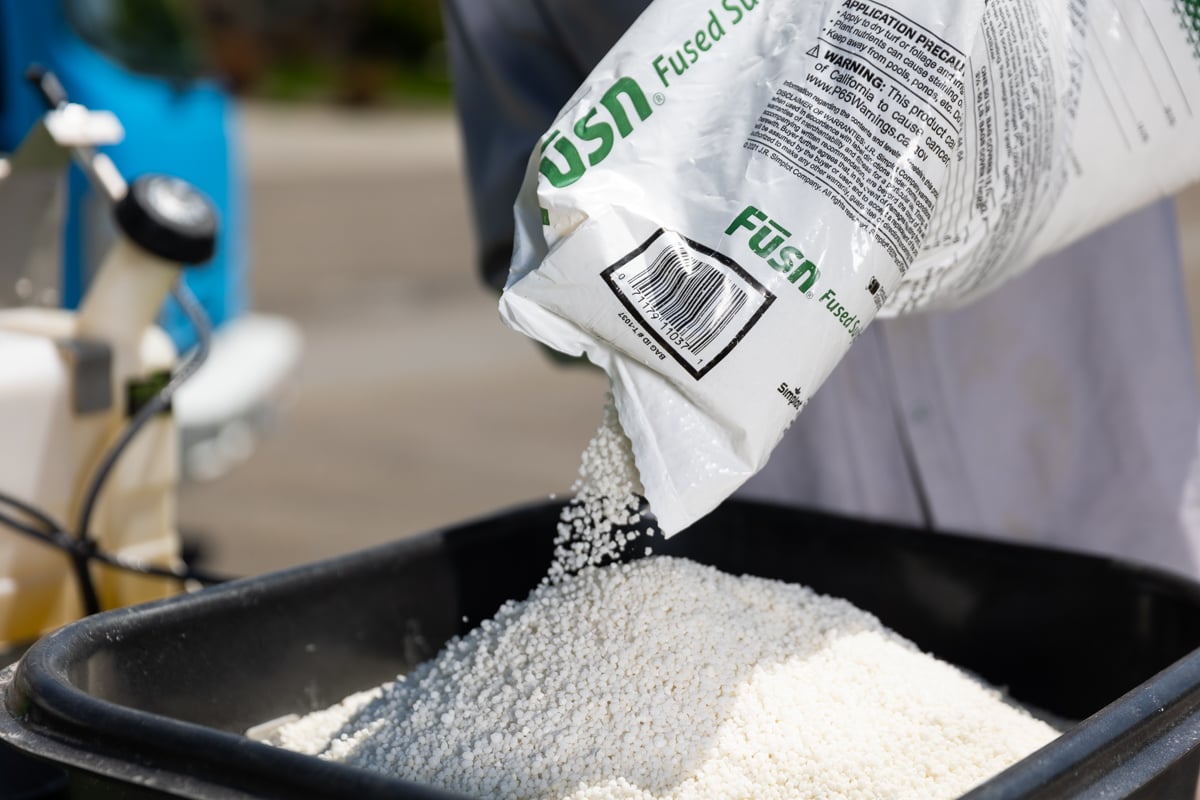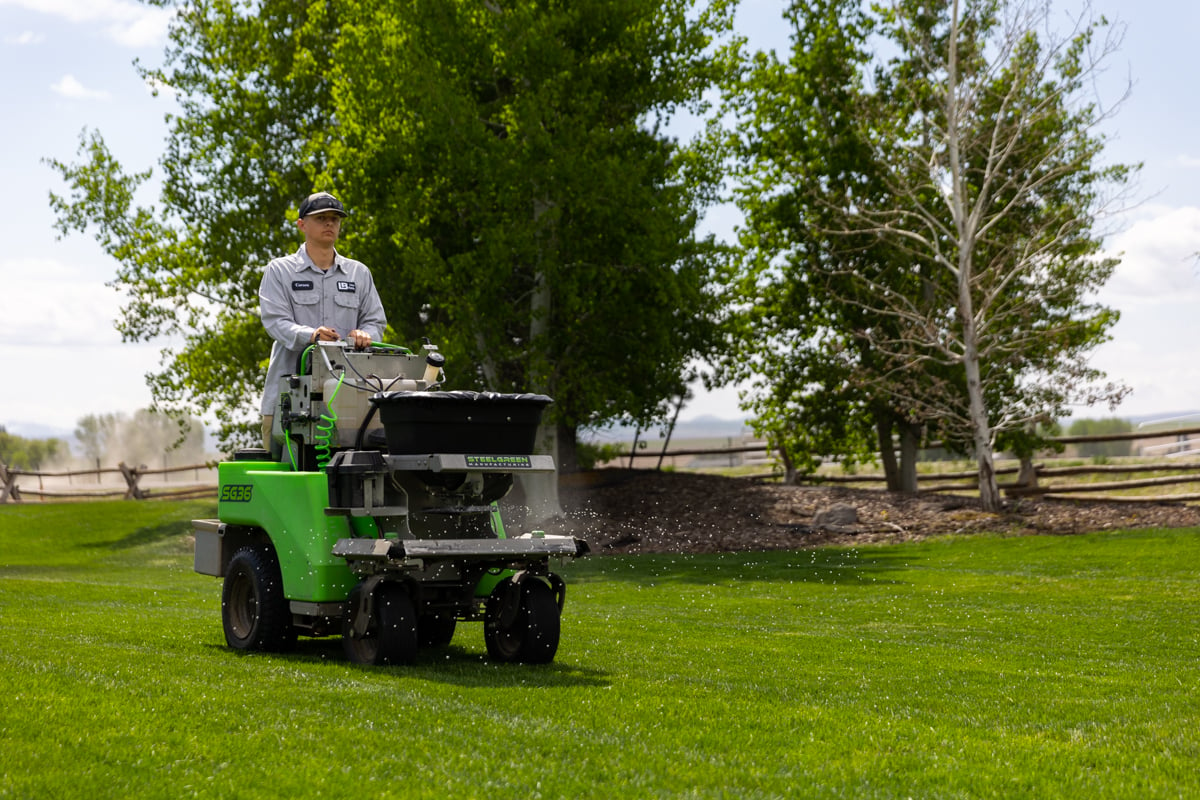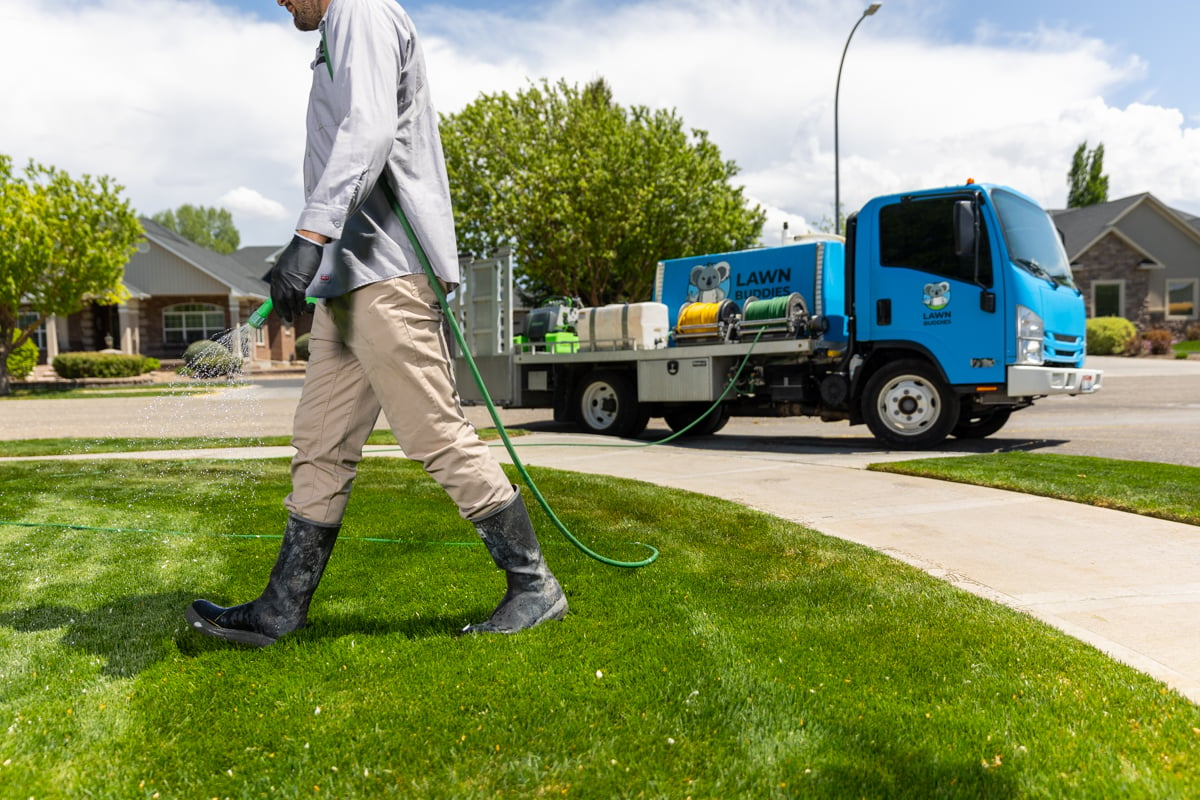How Often Should You Fertilize Your Lawn?
If there’s one scent that’s most reminiscent of spring, it’s the smell of fresh grass.
In order to have a lawn that is vibrant, green and ready to sink your bare feet into, however, you must take care of it. A turf maintenance program aims to produce attractive grass that is healthy and able to withstand the rigors of everyday use.
A key element of this program is fertilization. But what does fertilization do and how often does the lawn need it? How often you should fertilize your lawn is based on a number of important factors.
Types Of Lawn Fertilizer
Turf fertilization contributes greatly to lawn color, density, uniformity and growth. Properly fertilized grass better competes with weeds, crowding them out. Well-maintained lawns also recover from damage caused by environmental stresses like drought much faster than neglected or improperly fertilized lawns.

Fertilizer comes in many blends of three important nutrients—Nitrogen (N), Phosphorus (P) and Potassium (K). These nutrients are usually listed on the fertilizer bag in N-P-K order.
Using the right blend of N-P-K for your lawn takes an understanding of the specific needs of your turf, as well as your soil. Testing the soil can be a great first step in knowing what nutrients your lawn needs — and what your turf fertilization program should include. Lawn Buddies can do this for you or you can send a soil sample to a local university extension service for testing.
How Often To Fertilize Your Lawn
A typical lawn care program in Idaho Falls includes five fertilization treatments, two of which include some form of weed control, usually a pre-emergent herbicide in spring and a post-emergent herbicide in summer.
The full, five-step program is crucial to a truly healthy lawn.

One fertilization treatment each year really doesn’t do enough to help give the lawn the nutrients it needs; you wouldn’t notice a real positive difference.
It takes multiple applications. Even four treatments are just Okay. That fifth treatment, which is usually done around late October, is one of the most important for winterizing the lawn and helping it come back rejuvenated the following spring.

Also, consistency is key with turf fertilization. Caring for the lawn one year and then ignoring it the next doesn’t mean you won’t have problems such as weeds slowly start to creep up. A lawn consistently fertilized will slowly get to a prime and healthy growing place.
Lawn Application Timing Is Everything
The timing of each fertilization treatment, as well as using the right amount of nutrients, is also crucial to a solid turf fertilization program. You don’t want a bunch of iron or nitrogen to hit the turf at one moment in the growing season and then not at any other.

Using a slow-release nitrogen source is also important at certain times of year (like this spring which is a bit early this year) because it does pretty much as it describes — releases that nitrogen slowly into the lawn, providing that needed green up and growth burst as spring settles in.
Lawn Fertilization At Its Finest
As you can see, turf fertility is a detailed process that involves adequate knowledge of your turf types, your soil condition and understanding weather and other conditions that impact fertilization treatments.
Is Your Lawn Ready for a New Best Friend?
Choose a professional lawn care service in the Idaho Falls or Boise, ID area that bundles your yard’s most-needed treatments into one convenient, no-fuss plan that tells you the cost up front.
Got a few minutes? That’s all you need to get started.
- Fill out the form on this page
- Call us at (208) 656-9131
- Or read more about our services
Then kick back and relax in your healthy, thriving yard.



